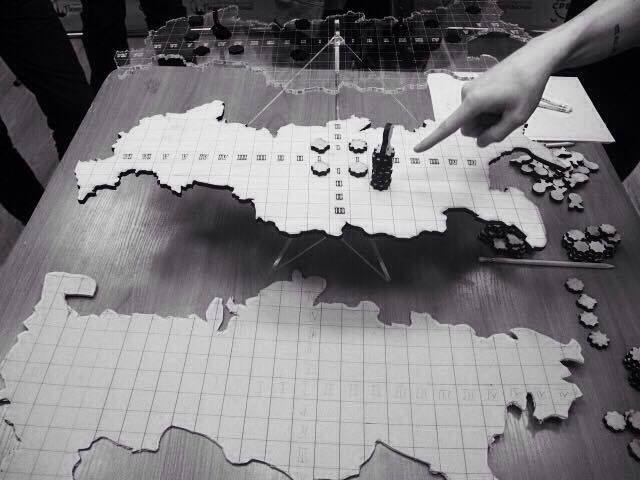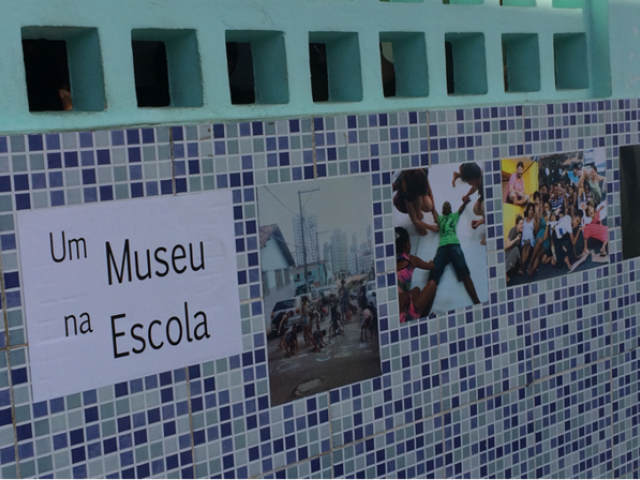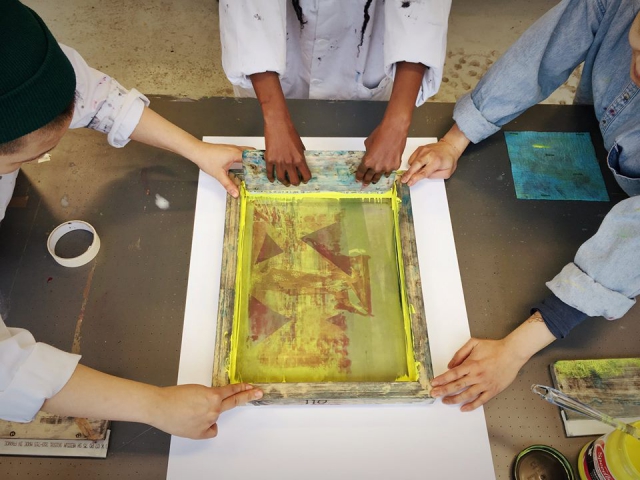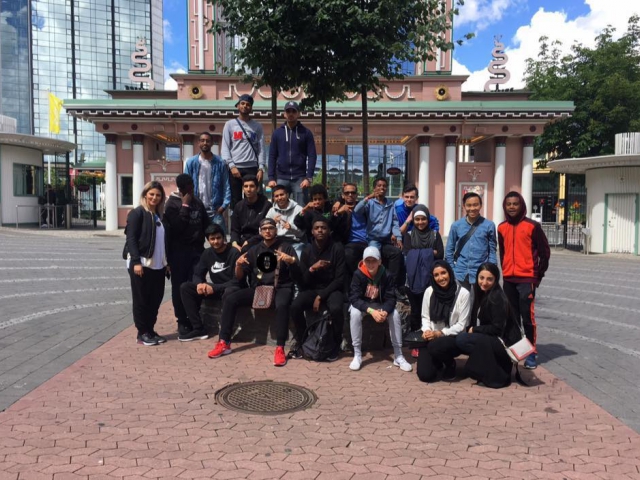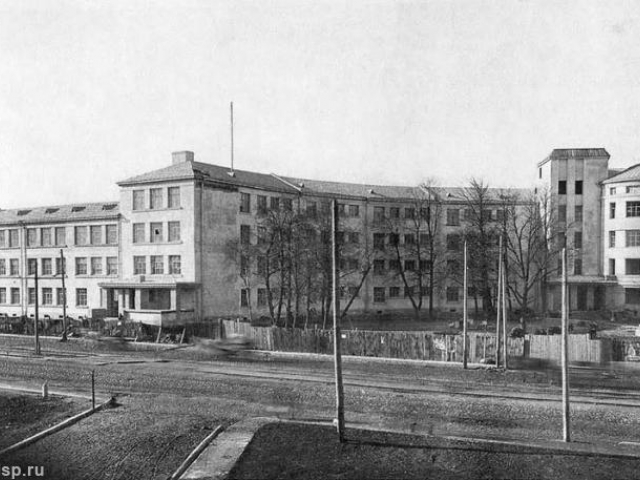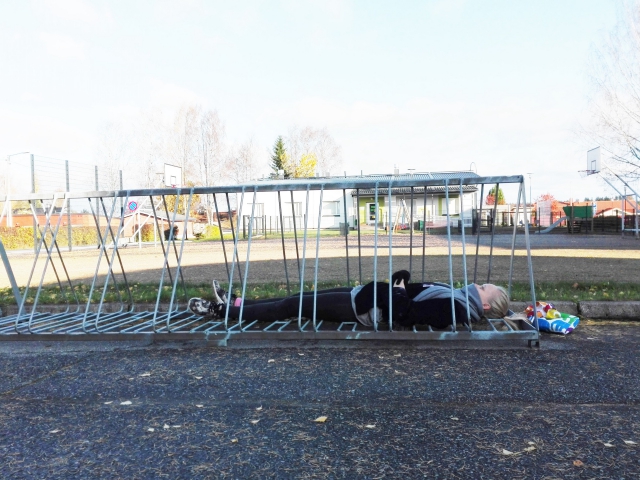Fast Forward to the Future
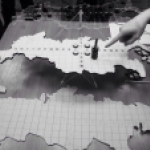
What:
con
Where:
Rosa House of Culture, Bolshaya Raznochinnaya, 24, St Petersburg
When:
08.12.2017 - 12:00
FAST FORWARD TO THE FUTURE
Final conference in the framework of the 4th season of the project ‘Critical Mass’
December 8-9, 2017
Rosa House of Culture, St Petersburg
How do states shape the future by raising, educating and loving young people? Social concepts of childhood appeared in the 17th century, which, along with sociopolitical transformations of the 20s century and development of youth policy, have significantly broadened the rights and possibilities of the youths. In the beginning of the 20th century the idea of the global renewal of the world was massively supported by the utopian pedagogic doctrine of the ‘century of the child’, presupposing that every child was a genius who can easily understand all the new developments of the global knowledge. For the artists of the Russian avant-garde, children were an ideal audience, with which all their dreams and hopes for a better future were connected. In the centenary of the Russian October revolution revisiting the role of young people in the society can bring some new perspectives on how they can influence and change our shared future as well as question some of the social institutions. Represented by schools, armies, universities, they seem to be more interested in maintaining order rather than stimulating development, critical thinking and political awareness. Сan contemporary art practices and new trajectories of experimental art education be an instrument for reinventing existing forms of dialogue with young people and create safe and responsive environments for their self-expression?
The international conference ‘Fast Forward to the Future’ organized by TOK, a concluding event of the 4th season of the project ‘Critical Mass’, will analyze how various artistic and social practices might be involved in creating new ways of interacting and exchange with young people. Artists, curators, designers, architects, historians, policymakers and educators from Russia, Norway, Sweden, Finland, Germany and The Netherlands will present the results of their theoretical and practical research and experiences gained during work with the youths. The presentations will touch upon the history and current context of youth movements in Russia and Europe, principles of shaping youth policies in the situations of sociopolitical, economic and cultural challenges and the role of art in building up perspectives for young people. Invited experts will discuss different governmental strategies and grassroot creative, social and educational practices that shape civil positions of young people in a number of countries.
December 8-9, 2017
Rosa House of Culture, St Petersburg
How do states shape the future by raising, educating and loving young people? Social concepts of childhood appeared in the 17th century, which, along with sociopolitical transformations of the 20s century and development of youth policy, have significantly broadened the rights and possibilities of the youths. In the beginning of the 20th century the idea of the global renewal of the world was massively supported by the utopian pedagogic doctrine of the ‘century of the child’, presupposing that every child was a genius who can easily understand all the new developments of the global knowledge. For the artists of the Russian avant-garde, children were an ideal audience, with which all their dreams and hopes for a better future were connected. In the centenary of the Russian October revolution revisiting the role of young people in the society can bring some new perspectives on how they can influence and change our shared future as well as question some of the social institutions. Represented by schools, armies, universities, they seem to be more interested in maintaining order rather than stimulating development, critical thinking and political awareness. Сan contemporary art practices and new trajectories of experimental art education be an instrument for reinventing existing forms of dialogue with young people and create safe and responsive environments for their self-expression?
The international conference ‘Fast Forward to the Future’ organized by TOK, a concluding event of the 4th season of the project ‘Critical Mass’, will analyze how various artistic and social practices might be involved in creating new ways of interacting and exchange with young people. Artists, curators, designers, architects, historians, policymakers and educators from Russia, Norway, Sweden, Finland, Germany and The Netherlands will present the results of their theoretical and practical research and experiences gained during work with the youths. The presentations will touch upon the history and current context of youth movements in Russia and Europe, principles of shaping youth policies in the situations of sociopolitical, economic and cultural challenges and the role of art in building up perspectives for young people. Invited experts will discuss different governmental strategies and grassroot creative, social and educational practices that shape civil positions of young people in a number of countries.
The conference will be conducted in Rosa House of Culture, an experimental educational space initiated by the Russian art collective ‘Chto Delat?’ as a platform for testing, learning and discussing art and social practices.
During the conference designers Ruben Pater and Roman Gornitskiy will make a spatial intervention that will address the questions of young people’s rights in different societies. Their project ‘Too young to know, too old to understand’ will embrace the entire conference space and will challenge the speakers and visitors to review the consistency of social norms based on age limitations.
TOK Curators will present a pop-up show comprising the results of the 4th season of ‘Critical Mass’ and exhibit projects created by artists-in-residence who worked with a network of youth clubs in St Petersburg throughout 2016-2017. Performance documentation, chronicles of building public spaces, design proposals, and a board game offering potential scenarios of the future will serve as a starting point for a discussion about how artists and creators can integrate creative practices into youth-targeted public institutions.
List of speakers:
Laura Arala, artist, Finland
Vadim Bass, historian of architecture, Russia
Anna Bitkina and Maria Veits/ TOK, curators, Russia
Ilya Budraitskis, historian, researcher, writer, Russia
Ulrika Flink and Erik Annerborn, curators, Sweden
Sahra Jaber and Helene Voldner, youth organizations leaders, Norway
Ruth Noack, curator, researcher, Germany
Anna Sanina, sociologist, researcher, Russia
Dmitry Vilensky, artist, Russia
Laura Arala, artist, Finland
Vadim Bass, historian of architecture, Russia
Anna Bitkina and Maria Veits/ TOK, curators, Russia
Ilya Budraitskis, historian, researcher, writer, Russia
Ulrika Flink and Erik Annerborn, curators, Sweden
Sahra Jaber and Helene Voldner, youth organizations leaders, Norway
Ruth Noack, curator, researcher, Germany
Anna Sanina, sociologist, researcher, Russia
Dmitry Vilensky, artist, Russia
Conference design and spatial intervention:
Ruben Pater and Roman Gornitsky
Ruben Pater and Roman Gornitsky
Conference program
Day 1, December 8, Friday
Day 1, December 8, Friday
12.00 - Introduction by TOK curators
12.15 - 12.45 Ruth Noack
On a museum in a school and why it is a logical step from some earlier models of art education
12. 45 - 13.15 Vadim Bass
12.15 - 12.45 Ruth Noack
On a museum in a school and why it is a logical step from some earlier models of art education
12. 45 - 13.15 Vadim Bass
Soviet architecture for learning and leisure: school, club, community centre
13. 15 - 13.45 Ruben Pater & Roman Gornitskiy
Too young to know / too old to understand, project presentation
13.45 - 14.30 Coffee Break
14.30 - 15. 00 Dmitry Vilensky
Children as a weapon of censorship
15.00 - 15.30 Anna Sanina
How to make a citizen: contemporary practice of patriotic education in Russia (and other countries)
15.30 - 16.30 Discussion and drinks
Too young to know / too old to understand, project presentation
13.45 - 14.30 Coffee Break
14.30 - 15. 00 Dmitry Vilensky
Children as a weapon of censorship
15.00 - 15.30 Anna Sanina
How to make a citizen: contemporary practice of patriotic education in Russia (and other countries)
15.30 - 16.30 Discussion and drinks
Day 2, December 9, Saturday
12.00 - 12.30 Ulrika Flink and Erik Annerborn
Art for all?
12.30 - 13.00 Laura Arala
100 secrets - giving a voice for young people through live art and performance workshops
13.00 - 13. 30 Sahra Jaber and Helene Voldner
Fubiak – a meeting place for youth and culture
13.30 - 14.00 Coffee break
14.00 - 14.30 TOK Curators
100 secrets - giving a voice for young people through live art and performance workshops
13.00 - 13. 30 Sahra Jaber and Helene Voldner
Fubiak – a meeting place for youth and culture
13.30 - 14.00 Coffee break
14.00 - 14.30 TOK Curators
Curator in the (youth) club: independent creative practices in a state-run institution (exhibition tour)
14.30 - 15.00 Ilya Budraitskis
Youth policy, imitative democracy and discourse of the "future" in contemporary Russia
15.00 - 16. 00 Discussion and drinks
14.30 - 15.00 Ilya Budraitskis
Youth policy, imitative democracy and discourse of the "future" in contemporary Russia
15.00 - 16. 00 Discussion and drinks
Conference working languages are English and Russian (translation will be provided)
The conference is organized and curated by The Creative Association of Curators TOK and supported by Nordic Council of Ministers, the Centre for German and European Studies (St. Petersburg - Bielefeld (Germany) and the Consulate General of The Netherlands in St Petersburg.



